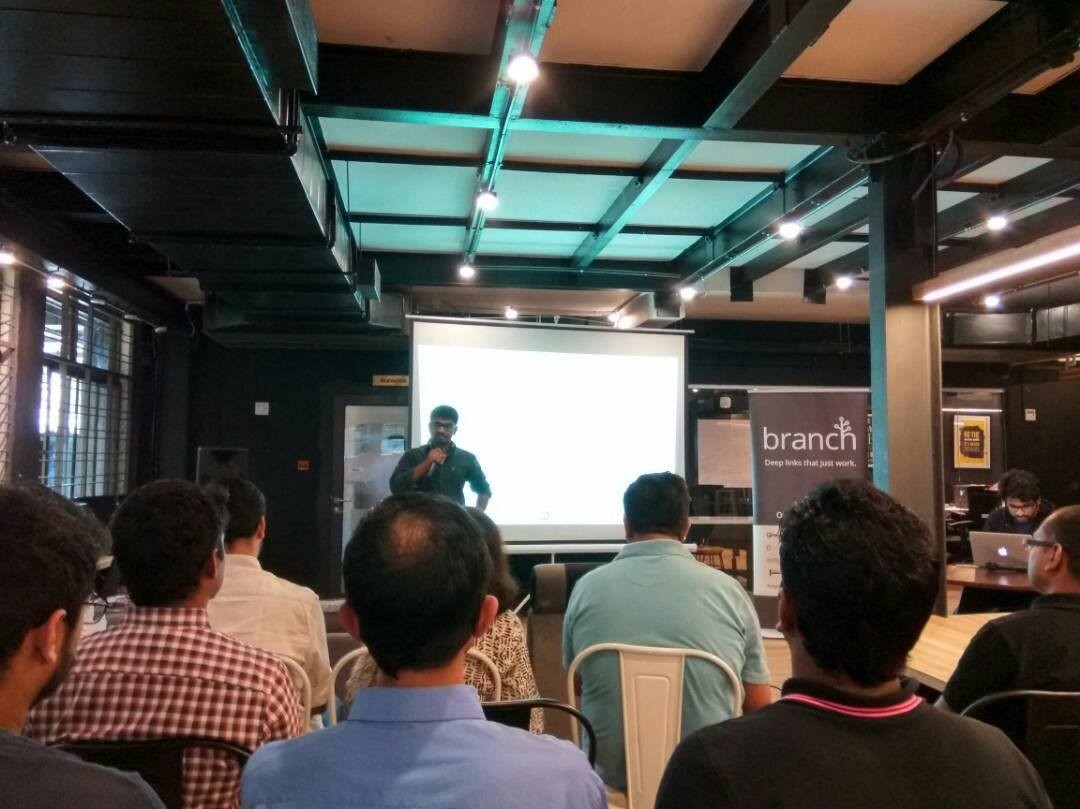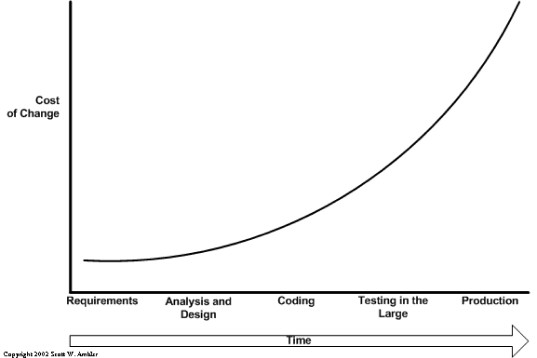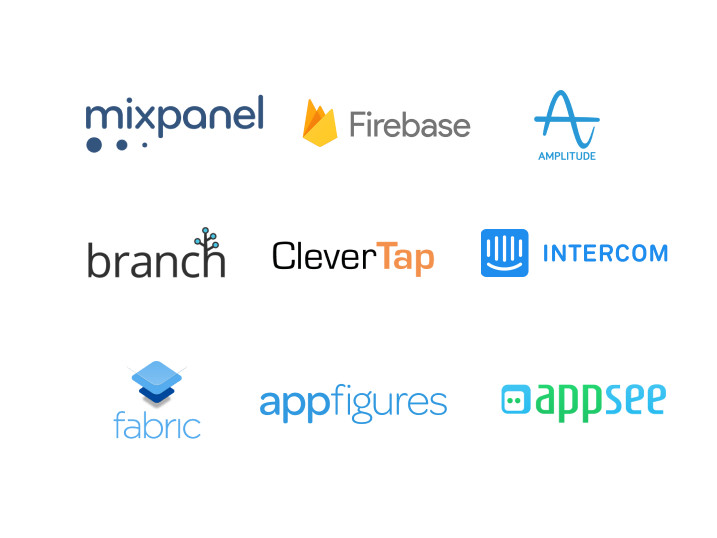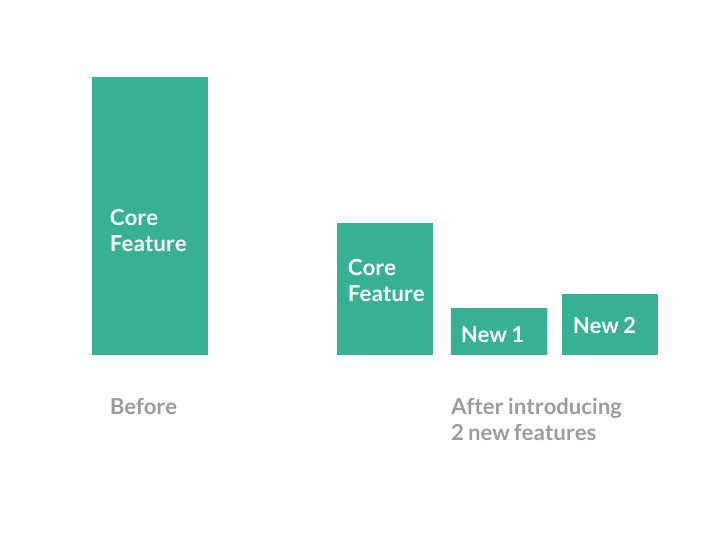A Conundrum called “Business requirement Document” alias “BRD” by Dr. Chandrika Kambam. @ckambam

…#Healthcare IT, #Gap in Healthcare IT, #failed IT projects, #Cost of failed IT projects

…#Healthcare IT, #Gap in Healthcare IT, #failed IT projects, #Cost of failed IT projects

I have found that many people find it difficult to say “No”. They end up saying “Yes” when their heart / mind / body is shouting “Noooooo…..!”. This could happen due to many reasons:
…Learn to say “No” by Sanjay Dandekar, @santhedanRead More »
In the past 5 years, I had the opportunity to build and ship great consumer products which touches the lives of millions of people around the world. Recently, Branchmetrics invited me to share some of my learnings at Innov8 CoWorking Space along with speakers from UrbanLadder, HeadSpin, Branch.io and Glispa Global.

A complex product that works is always an evolution of a simple product that worked.
If you are not embarrassed by the first version of your product, you’ve launched too late.





 How can you solve your metrics problems then? Well, small incremental efforts towards optimising your AARRR funnels will help you improve your pirate metrics not always a new feature.
How can you solve your metrics problems then? Well, small incremental efforts towards optimising your AARRR funnels will help you improve your pirate metrics not always a new feature.
The article has been republished here with the Authors’ permission. The article first appeared in the author’s LinkedIn pulse page.


focus on Process as it relates to the “how” the work is to be done
These can be easily understood by asking the quintessential questions of Why, Who (whom/ whose), What, When, Where and How.
Why are we doing this feature/ product? The other question to answer is for Who(m) is this required? These are the hard questions that need to be clearly answered on what the problem/ solution space is and the potential customer base being looked at. This is generally addressed by Product Managers or Portfolio Managers.
What is the expected functionality? This corresponds to the requirement analysis phase and there are different methodologies that can be used for capturing and validating the requirements or use cases. This is generally addressed by Business Analysts, Product Managers or Product Owners.
How are we going to achieve the requirements? This corresponds to the design phase and based on the organization approach, the level of documentation required can vary. Some level of prototyping is also done in this phase to help validate the designs. This is generally the forte of Technical Architects, Development Leads.
How is this to be developed given the requirements and design? Focus is on coding/ development, additional steps involved include testing, debugging, documentation and demos before this is considered complete. The development and Quality Assurance teams handle this important phase with help from Project Managers and Scrum Masters.
When and how is this expected by the customer? Additional questions that need to be clear are the mode of delivery (packaged build on a disc or digital delivery), any requirements specific to on premise/ Cloud/ SaaS deployments, any specific requirements from a platform perspective (Windows/ Linux/ Apple/ Android/ Xbox/ PlayStation etc.) that need to be addressed? The Configuration Management Team manages this with help from the development team.
Where is this tool/ product to be deployed? After the delivery has been made, the actual deployment is done and it is the critical step to get the tool finally in the hands of the customers. There are quite a few projects that do not get past this stage though due to different reasons and sort of lie on the shelf. In case of SaaS/ Cloud offerings, internal DevOps teams manage this phase. In case of on premise installations, this is handled by the customer IT teams along with specialist Implementation Consultants who understand both the product and the customer environments.
Whose Success is it that we aim for? It is obviously for both the end customer as well as the product teams who have toiled to give a final shape to an idea/requirement. There are sometimes roll-out related challenges, performance and stability issues, hard to reproduce issues and sometimes silly defects, but if we keep the Delight of our customers in mind, we work hard towards debugging and resolve the issues. This is best achieved by having a good communication channel between customer and product teams and is built on a strong foundation of trust.
Remember a delighted customer will come back to you and you will have many more cycles starting again from the Define phase.
The article was first published in Mr. Prashantha Sawhney’s LinkedIn Pulse post. The article is reproduced here with the authors permission. The views shared by the author are shared in his personal capacity.
We focus on People – “who” do the work. While it is important to have a good efficient team, it is equally important to have some norms for them to be successful
In small as well as large organizations, we see how working in silos (teams/ departments) causes issues in quality and delivery. This also impacts customer experience, where he/she feels that nobody is really understanding them/ their issue or trying to solve their problem, but tossing the ball across to the next person or department. Collaboration is the key and is an action that the leaders need to demonstrate in their daily work and help inculcate in their teams. This aspect is more of an organizational behavior that individuals need to model.
In today’s world, everyone is trying to prove themselves every minute/second. In the process, we tend to focus a lot on ourselves, our team and trumpet our success. This may at times lead to having a superiority complex. While this is important, it is even more important to stay humble – so we can learn when we make a mistake or to seek help when we are stuck. It also enables team members to be approachable. This aspect is an individual trait and need to be practiced.
Having clear priorities and goals for different team members/ departments that align with the overall company goals is critical. When team members/ departments are not aligned, they can pull in different directions which can cause confusion to the rest of the team/ department. This is an area that the leaders need to work among themselves to get clarity first and then percolate it down the organization. This aspect is more of an organizational behavior.
When people have the right skills and are equipped with the right knowledge/ tools, they can be very effective. However in today’s world with plethora of knowledge sources and learning avenues, this is something that can be easily picked up/taught even after a team is formed based on the time available and nature of work. This aspect focuses on individual growth and can be substantially aided, with the right organizational support/ policies.
With all the other pieces in place, this is the last critical area. When people are aligned with the goals, are challenged at work and believe in the work they do, their motivation levels are the best, There are somethings an organization can do – to provide a good work environment, good recognition and rewards programs, competitive compensation and benefits. However in this aspect, a lot is also the responsibility of the individuals and how they deal with their own internal upkeep and self motivation.
Here’s wishing you have a team that is successful and is able to cross the chasm, from ordinary to very successful teams using CHASM approach.
The article was first published in Mr. Prashantha Sawhney’s LinkedIn Pulse post. The article is reproduced here with the authors permission. The views shared by the author are shared in his personal capacity.
“Taken together, the Social Technographic groups make up the ecosystem that forms the groundswell. By examing how they are represented in any subgroup, strategists can determine which sorts of strategies make sense to reach their customers.” – Forrester
I came across this insightful categorization from Forrester, that provides a categorisation of your Social Media users, using the Social Technographics ladder on the basis of their level of activity on your Social Media Channels
To enable an engaging social media strategy, it will be important to guide your followers across the various steps in the ladders, leading them from being Inactives to being Creators of thought leadership content.
By examining each sub-group, social media strategists can determine which sorts of strategies make sense to reach their target customers. Companies that can understand the typography of their end customers can therefore better target their audience with topics and articles of relevance.
Based on the Forrester Social Technographic ladder of engagement, the people participating and engaging with your content has been categorized by Forrester with the percentage for each type of person.
We are using the following interactive Word Cloud to understand the conversations our readers are having around Digital Health topics
[tab]
[content title=”About Manish Sharma” icon=”fa-heart”]
[/content]
[content title=”Latest Articles”]
[/content] [/tab]
The one framework that has appealed to me and been found useful is called 3 P’s. These are 3 equal pies that help make the circle of what is required to be successful.
Many engineers/ technical/ functional experts sometimes tend to think of this aspect as being HR/managerial related. However this is a really critical part as this is the group with whom we spend most of our waking hours. Without people (whether it is 1 or 100 or 1,000), the wheel cannot exist. It is not just about having people occupying seats, but about having the right people. Having people collaborate with each other helps move in the right direction else there is no tangible progress.
Having appropriate processes in place helps us be predictable in what we do as well as enabling quality aspects to be met in a timely manner. We do not have infinite time, resources or money to try to do things the right way and need to deliver or execute in more defined ways with proper definitions of expectations at each stage of the process. These can evolve or time and get overly complicated but with right attention they can also be simplified Execution cannot be as stated below:
This is the end result that shows what we wish our customers/partners to use. It may be a tangible physical product, Software UI/Mobile App or maybe even just background API’s, but it needs to have a defined state when it can be considered complete. We may think of just being related to specifications of functionality, but it goes beyond that to understand why the product should even exist or is needed.
In short among other things, to be successful we need people who are skilled and motivated, who follow the processes and believe in the product they are working on.
More on each of these aspects in subsequent posts.
Data | Medical Devices | Connectivity
The above three scenarios present the ability to stream data in realtime to a base station providing the ability to remotely monitor the performance of a space-craft, a formula 1 car and a remote autonomous vehicle.
Similarly consider the following use cases in relation to a patient in a Healthcare setting:
presents use cases that require remote monitoring of patient information.
The existing technological paradigms such as IoT, data streaming analytics, connectivity & interoperability allow for a framework to allow for remote patient monitoring in each of the three Healthcare use cases
I would like to propose TRIVENI, a remote patient monitoring solution that is a confluence of three aspects of patient information
Triveni proposes to implement a plug-n-play framework that will allow for easy connectivity between healthcare information sources.
The etymology of the word TRIVENI in Sanskrit means “where three rivers meet”. Similarly, the three aspects of Patient Information need to be integrated to meet the requirements of a remote patient monitoring solution
Initially to showcase the Proof-Of-Concept for the solution, the above three focus areas will be considered to present as the use cases. Each of the three focus areas present the ability to test the confluence of three aspects of Patient Information defined above
 |
| The Tower of Babel (Pieter Bruegel the Elder, c. 1563), a metaphor for the challenges existing in medical device semantic interoperability today |
 |
| Typical Remote Patient Monitoring process (adapted from Center for Technology and Aging) |
The Center for Technology and Aging indicates a 5 – Step process for Remote Patient Monitoring. The 5 steps are essential to deliver a continuous flow of patient related information to the remote base station monitoring a patient(s) in any of the use cases or the focus areas presented earlier
It becomes imperative for the solution to incorporate these founding principles of a remote monitoring process into any framework/ product of such a nature. The process steps get implemented in the TRIVENI framework, allowing for the continuous monitoring of patient information from the various connected systems.
The processes allow for a modular approach to the Product Definition of the TRIVENI framework, with the ability for each component of the platform to evolve as dictated by its internal technology and thus enables each component to incorporate newer technology paradigms as and when they present themselves
The TRIVENI Connect is a device that acts as a converter that allows any medical device to connect to the TRIVENI system. The Connect device for instance will be connected to a Patient Monitor via the RJ45, RS232-to-USB converter.
Once connected, the TRIVENI Connect will automatically download the relevant driver from the TRIVENI HUB, that allows for the Patient Data Stream from the Monitor to be streamed. Additional features of the TRIVENI Connect are:
The TRIVENI HUB is a device that acts as a data aggregator device at the remote location. All the Patient Data streams from various connect devices are routed to the HUB.
The HUB can be configured via a mobile app. Using the mobile app the users will be able to configure various aspects of the TRIVENI HUB like the internet connectivity, TRIVENI Connect linked to the HUB, Username and password configuration of the HUB & Connect devices, Store and forward configuration to name a few.
The HUB device has the following features:
The TRIVENI APP is an android or iOS based app. There are two APPs that come with the TRIVENI framework. One APP is for configuring the remote configuration for the connect and the hub devices at the location for the client
If one was to trace the progression of delivery of printer drivers, it presents an interesting case study regarding how hardware-software interoperability has progressed over the years in the IT industry. And studying these aspects help us to, hopefully in the future define the way Interoperability in the Healthcare Industry should be handled.
Printers have been essential hardware devices that are connected to the software platform (OS) via various types of connectivity platforms, and service the productivity needs of the organisation.
Lets consider the various Printer installation processes we have seen in the past
Taking learning from the way peripherals interoperability has been handled in the IT industry, Healthcare Interoperability should be a de-facto feature that should be present in most systems
Now the idea for defining the progression of a hardware connectivity w.r.t. The Printer device, is to try and define how medical device connectivity & interoperability should be enabled in the future
I am looking for partnerships, sponsors to develop this solution. If interested kindly get in touch via email: manish.sharma@hcitexpert.com
Additional Articles by the Author
Concise message from the #Leaders conference @Arab_Health #ArabHealth @gulf_news pic.twitter.com/p4Mh0coMvw
— Homero Rivas (@mHealthSurgeon) January 29, 2016
Additional Articles by the Author:

You must be logged in to post a comment.